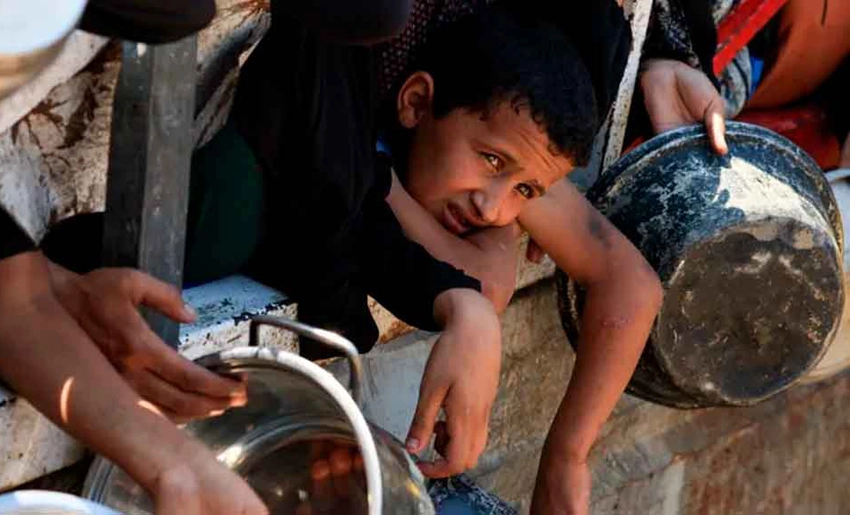The Food and Agriculture Organization of the United Nations (FAO) confirmed this Friday that more than half a million Palestinians are suffering from famine in Gaza.
A report released by the press office of that international organization describes the worsening humanitarian situation in the Strip. Based on the results of the latest analysis of the Integrated Food Security Phase Classification (IPC).
The report also warns that widespread starvation, destitution, and preventable deaths due to lack of food. Due to the Israeli aggression, which is already affecting the Gaza governorate, could soon spread to Deir Al Balah and Khan Younis.
In the statement, issued jointly with the World Food Programme (WFP), the United Nations Children’s Fund (UNICEF), and the World Health Organization (WHO), the FAO reiterates its call for a ceasefire and for Israel to facilitate humanitarian access to stem deaths from hunger and malnutrition.
The signatory institutions also express their deep concern about the threat of an intensified military offensive in Gaza City and any escalation of the conflicto. As it would have even more devastating consequences for the civilian population, where famine conditions already exist.
The statement specifies that classifying famine “means that the most extreme category is triggered when three critical thresholds are exceeded: extreme food deprivation, acute malnutrition, and deaths from starvation.” Emphasizes that the latest analysis confirms, based on reasonable evidence, that these criteria are already met.
By the end of September, more than 640,000 people in the Gaza Strip will face catastrophic levels of food insecurity, classified as IPC Phase 5. While 1.14 million Palestinians living there will be in a state of emergency, corresponding to Phase 4.
Furthermore, another 396,000 people face a food crisis, classified as IPC Phase 3. Analysts estimate that conditions in the northern Gaza Strip are worse than in Gaza City, but this estimate is difficult given the paucity of data.
After nearly two years of conflict, “constant displacement, restrictions on humanitarian access, constant interruptions and impediments to access to food, water, medical aid, support for agriculture, livestock, and fisheries, with the collapse of health, sanitation, and market systems, have plunged the population into famine.”
Access to food in Gaza remains severely limited, and in July, the number of households reporting extreme hunger doubled compared to May. With more than one in three people going days without eating, “while adults frequently skip meals to feed their children,” the document notes.
Childhood malnutrition is also accelerating, with more than 12,000 children identified as acutely ill in July, the highest monthly figure on record. A sixfold increase since the beginning of the year. Nearly one in four children suffer from life-threatening severe acute malnutrition (SAM), the source adds.
With information from Prensa Latina
- Acinox in Holguin Expands Product Sales - 28 de November de 2025
- The University of Medical Sciences Receive an Excellence Accreditation - 28 de November de 2025
- A Happy and Fulfilled Woman in the Laboratory - 28 de November de 2025

